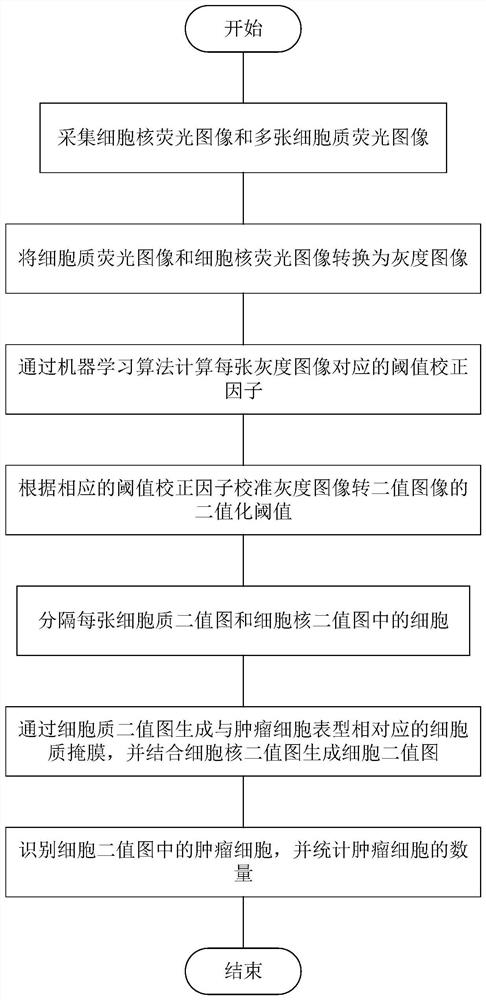Tumor cell phenotype recognition counting method based on cell fluorescence image
A fluorescence image, tumor cell technology, applied in the field of image analysis, can solve the problems of inability to count, unable to achieve fully automatic effect, manual adjustment of system parameters, etc., to achieve the effect of small error, shortened recognition counting time, and high recognition accuracy
- Summary
- Abstract
- Description
- Claims
- Application Information
AI Technical Summary
Problems solved by technology
Method used
Image
Examples
Embodiment Construction
[0036] The present invention will be further described below in conjunction with the embodiments and accompanying drawings.
[0037] Such as figure 1 The flow chart of the tumor cell phenotype recognition and counting method based on the cell fluorescence image shown, the recognition calculation method includes:
[0038] Step 1. Acquire multiple nuclear fluorescence images and cytoplasmic fluorescence images. The fluorescence image of the cell nucleus is a fluorescence image collected after the cells are stained with a cell nucleus marker, such as the nucleus staining reagent DAPI. Cytoplasmic fluorescence images are fluorescent images collected after cells are stained with different types of cytoplasmic markers, such as leukocyte markers-leukocyte common antigen, tumor-specific protein markers-keratin or cell surface vimentin. The collected cytoplasmic fluorescence images correspond one-to-one with the cytoplasmic markers used. In this way, a variety of tumor cells with di...
PUM
 Login to View More
Login to View More Abstract
Description
Claims
Application Information
 Login to View More
Login to View More - Generate Ideas
- Intellectual Property
- Life Sciences
- Materials
- Tech Scout
- Unparalleled Data Quality
- Higher Quality Content
- 60% Fewer Hallucinations
Browse by: Latest US Patents, China's latest patents, Technical Efficacy Thesaurus, Application Domain, Technology Topic, Popular Technical Reports.
© 2025 PatSnap. All rights reserved.Legal|Privacy policy|Modern Slavery Act Transparency Statement|Sitemap|About US| Contact US: help@patsnap.com



